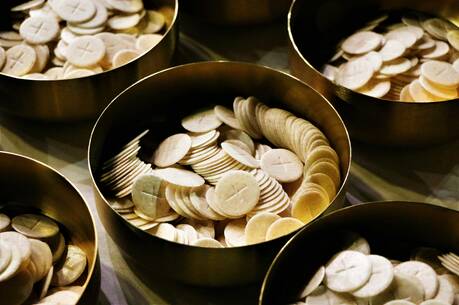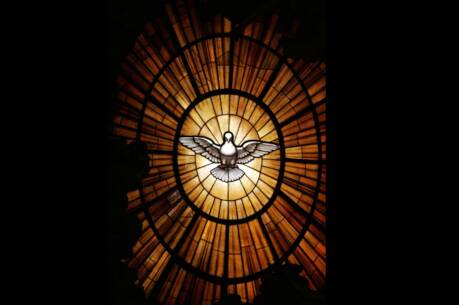Covenant Sacrifice
The Eucharist is a profound mystery with many different aspects. As the sacrament of ongoing Christian life, the Eucharist is a commemoration of Passover, participation in the life of Jesus, the memorial of his passion and death, a meal with the risen Christ and a sign of hope for the coming kingdom of God. With the Scripture texts for the feast traditionally known as Corpus Christi (“Body of Christ”), we can add to the list the aspects of covenant meal and sacrifice.
The Old Testament reading from Exodus 24 combines the two motifs. A covenant is an agreement between two parties that gives structure to their relationship. A sacrifice is an offering made to God to win God’s favor, to acknowledge God’s help and protection or to restore a broken relationship with God. The passage from Exodus 24 marks the end of the “the book of the covenant” in Exodus 19–24, which contains the Ten Commandments and other laws given to Moses on Mount Sinai. To express the people’s acceptance of the covenant with God, Moses offers a sacrifice, sprinkles blood on the people and proclaims, “This is the blood of the covenant that the Lord has made with you.”
The biblical motifs of covenant, sacrifice and blood come together in Mark’s account of Jesus’ Last Supper. In his words over the cup Jesus evokes all three images: “This is my blood of the covenant which will be shed for many.” Thus Jesus interprets his imminent death as a covenant sacrifice and evokes the whole history of his people’s relationship with God. He also links himself to the Suffering Servant of Isaiah 53 whose life was poured out “for many.”
The theological significance of Jesus’ death as a a sacrifice for sins is explored in depth in Hebrews 9. The ancient ritual of the Day of Atonement (see Leviticus 16) provides the background. Whereas the Israelite high priest entered the Holy of Holies at the Jerusalem temple, Jesus entered the heavenly sanctuary. Whereas the high priest offered animals as sacrifices, Jesus offered himself as the perfect sacrifice for sins. Whereas the high priest sprinkled animal blood in the Holy of Holies, Jesus willingly shed his own blood on the cross. (In this context blood is a symbol of life.) Whereas the high priest repeated his sacrifice once a year, Jesus offered himself once for all and brought about eternal redemption.
The sacrifice of Christ marks the beginning of the new covenant. Its essence is self-giving love. It begins with God’s love for us and the self-communication and self-offering of God’s Son. It is the totally free and loving response of the Son in his humanity, shown especially in his suffering and death. In it we are taken into the self-giving love of the Father and Son.
In the covenant sacrifice of the Eucharist we affirm our identity as God’s people in Christ. We join in the meal that Jesus shared with his disciples and are challenged to share in his suffering and death. And we participate in the benefits of the one, perfect and all-sufficient sacrifice of Christ through the “blood of the covenant which will be shed for many.”
This article also appeared in print, under the headline “Covenant Sacrifice,” in the June 5, 2006, issue.







